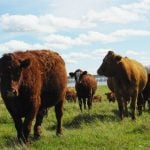
Features

Take verticillium stripe in canola seriously
A Manitoba farmer warns others about the threat this disease poses to canola production

Tips to achieve financial harmony with family and lenders
Consider the five C’s of small business lending as an evaluation tool for a loan

Corteva’s OnDeck offers crop rotation flexibility
A wheat and barley in-crop herbicide with no cropping restrictions for peas, lentils or canola the following year

Root rots in pulses update for 2023
Scientists and plant breeders are hopeful they can provide solutions, but long and diverse crop rotations are still the best management options

How to control crown rust in oats
In severe cases, it can slash yields by up to 40 per cent. Here are four strategies to help keep that from happening

Ignoring fatigue is a slippery slope

Cover cropping on the Prairies
A farmer survey shows many producers are growing cover crops successfully, but more agronomic knowledge and supports are needed

Application timing of PGRs
When to use PGRs and application guidelines

Weed control timing is important: sooner is better than later
If weeds get the upper hand, a percentage of yield loss can’t be recovered

Tools to reach 52 bushels per acre canola in 2023
Focus on and execute these five agronomy priorities to increase overall yields and profitability


